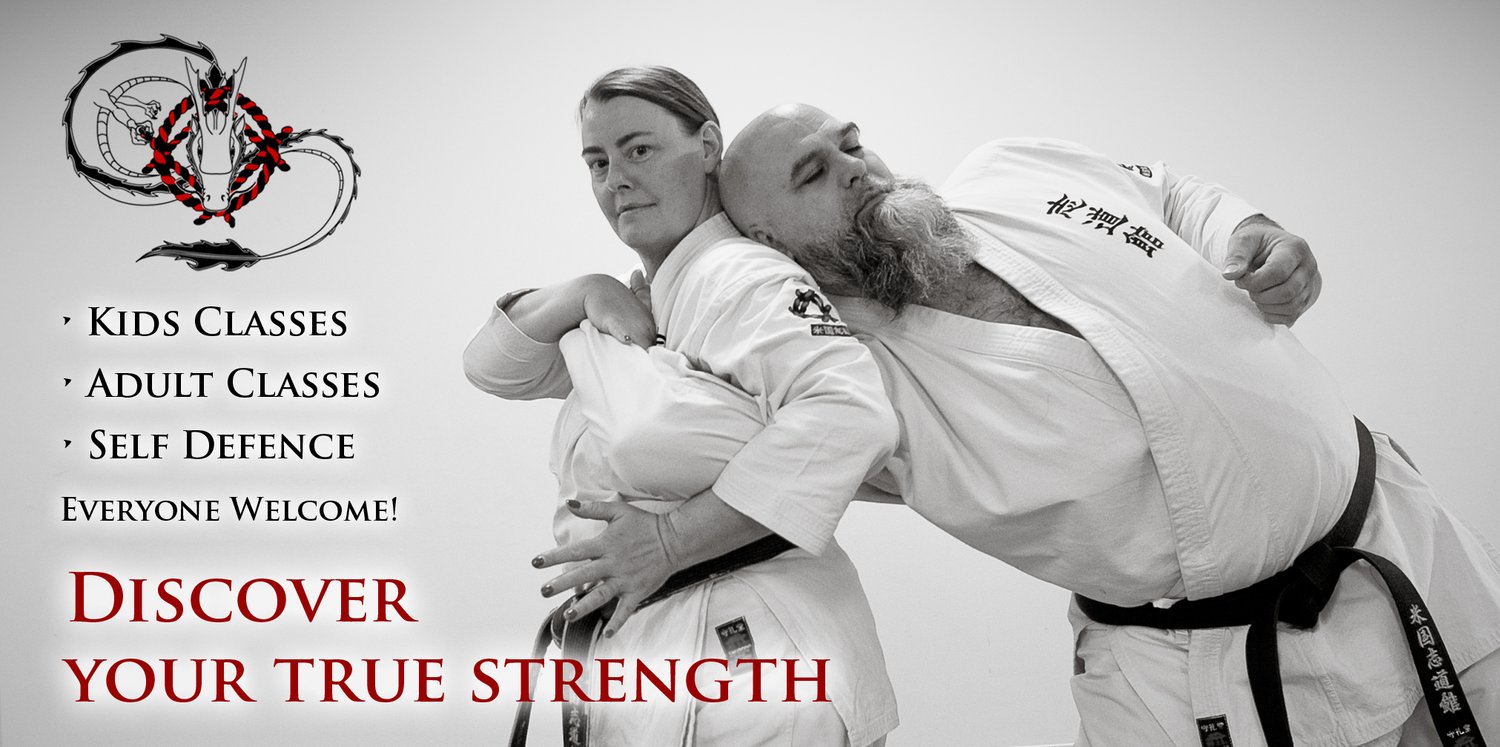What is Original Okinawa Karate?
Karate is an ancient form of self defense, which originated in Okinawa, Japan. In our style, Original Okinawa Karate, the focus is to preserve the original teachings of open handed martial arts. This is done through the utilization of blocks, strikes, joint manipulation, offsetting the opponent’s center of balance, and using the aggressor’s momentum against them.
At the very center of our training is self-control of both the mind and body. Individual character development is held in high regard within our dojo and association. Seikichi Iha, Hanshi, 10th Dan often reminded us that the cornerstone is friendship and cooperation. Iha Sensei lived this motto and was apparent in the way he interacted with each of us. He is world renowned and was described as a “teacher of teachers.” It is a great honor for our dojo to help contribute to his legacy.
Kata
Kata is at the center of our training. It is a series of self-defense moves that are practiced individually to promote muscle memory, control, balance, and strength. Because kata is practiced individually, the rhythm is often altered to facilitate various skill development. It is well understood that the more you do something the more proficient your body becomes. For this reason, we continually practice kata so that our bodies will efficiently remember and execute the necessary self defense technique during our time of need.
In addition to the primary self defense component, there is an internal balance that comes with traditional martial arts. For many martial arts practitioners, performing kata is calming and invigorating. For this reason, karate is often referred to as walking meditation. Not only does the kata improve skill set, but it also helps the practitioner find inner calm and balance.
Kumite
Kumite is a series of moves designed to be practiced with a training partner. The different kumite is an expansion of partner drills that are learned in the early stages of training. As the student progresses, additional skills are introduced and practiced. Kumite is like sparring, but choreographed to ensure development of specific skills. As skill is developed, the partner interaction is expanded. This is an area of karate that is easy to see the motto, “if you can’t do it slow, then you can’t do it fast” comes to light.
This area of training is one of the components of karate that friendship and cooperation is heavily emphasized. As a karate family, we understand that intending to harm our training partner is not productive for learning. Respect for our training partner is a priority. We work at the level of ability for the lowest rank. In this way both individuals learn and grow. The higher rank learns control and valuable teaching skills, and the lower rank becomes more proficient with the new skill set.
Bunkai
Bunkai is the further expansion of partner drills and interactions. In this training exercise individuals work collectively, and cooperatively, with up to five partners in further choreographed self defense training. In our style, it is up to a five to one group sparring exercise. This level of training is reserved for those who are higher in rank.
It is important that trust, respect, and cooperation be at the center of this area of training. Like with kumite, the goal is not to harm, but to develop strong self defense skills through the interaction with trusted karate family. It is extremely difficult to effectively learn when basic sense of safety and well being is compromised.
The Makiwara
The makiwara is often referred to as the “second Sensei” and is an interictal part of karate training. A makiwara is a striking board that is usually mounted to the floor, is shoulder height, tapered, and may or may not have a cover at the striking point. Some makiwaras will start with slight padding adhered to it for beginners. As the practitioner advances the board may be bare, have twine, thin leather, or other conditioning materials attached. The makiwara is used to develop precision, strength, and conditioning for various strikes. Regular interaction with the makiwara is vital for skill development.
In our dojo the traditional makiwara is not introduced until a student reaches a mid rank level and not for young children, due to safety concerns. For beginners and children, we use other striking items that are appropriate for their age, rank, and skill set. When it is time for the makiwara to be introduced it is done with Sensei or one of our instructors. The makiwara is a strong teacher that does not compromise. Striking too hard initially will be a quick testament to that fact.




